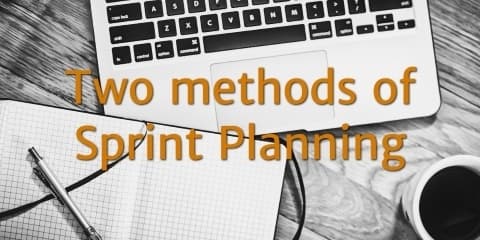- You are here:
- Home »
- Agile
Category Archives for Agile
Two methods of sprint planning in agile / scrum

Sprint planning in agile is one of the essential Scrum ceremonies and is absolutely vital to any team doing Agile software development with Scrum. Successful sprint planning gives a team a clear and realistic goal and a sensible pipeline of work. It also helps teams understand stories and their flow. However, many teams get tripped […]
Continue readingWhy agile projects need to fund BML properly

One of the key concepts from Eric Ries’ seminal book, the Lean Startup, is “Build Measure Learn”, or BML. This means that rather than deliver projects in a sequence, organisations should build something small, measure behaviour and learn from those measurements, then loop back and build again (i.e. extend or change the product). While many […]
Continue readingIs agile really all about being able to change?

The myths about agile and change We all know the stories: “if you do agile, you can change!”. Isn’t that great? Those poor fools doing Waterfall can’t change. They bolt themselves to this big plan, and stick to it even when it goes to hell. But on an agile project, we can do whatever you […]
Continue readingHow to manage scope creep in Agile / Scrum

OK we’ve all heard of the scope creep bogeyman. He haunts the dreams of young impressionable software developers around the world. He prowls the streets at night, looking for weary project managers to pounce on. We’ve all heard the horror stories of big brave projects, brimming with exciting scope items and starry-eyed business analysts, that got […]
Continue readingThis is why your agile retrospectives don’t work

Every team doing scrum will (should really) be doing a retrospective each sprint. This means that the team gets together and discusses what went well, what went not so well, and what could be improved. The idea is that these regular retrospectives become an engine of “Kaizen” or Continuous Improvement for the team. How do […]
Continue readingWhy aren’t story points a unit of time?

Continuing on the theme of estimation, a common question that comes up is “so are story points a unit of time?”, usually followed a few seconds later by “Why not?”. People seem to want the abstract “story points” to become hours, days, or similar. The consensus in the Agile community, which I agree with (though […]
Continue readingAgile metrics – the good, the bad and the ugly

Agile teams often look at and discuss metrics. Some of these metrics are interesting and important, some of them are of questionable value, and some should only be used with caution. This article will attempt to clear this up. The use and misuse of metrics Before going into the various metrics that agile teams use, […]
Continue readingProject versus product mindset

I’ve talked a bit recently about project management and project managers and some problems in this area. More specifically: Traditional project managers don’t care for the long-term interests of the team Traditional project management isn’t interested in the long-term benefits of the project after it has been delivered Project management is designed for project work, and […]
Continue readingWhat does “project success” mean?

A lot of people probably assume that identifying success for a project is simple. Well it actually is a bit more complex than you think. This article will outline the conventional way people see it, and then show that it has a lot of problems. And suggest some alternatives. What is project success? A few […]
Continue readingThe old and new faces of Lean

I wrote recently about Lean and Agile, the differences between the two, and their strengths and weaknesses. Things have become more confusing due to the arrival of a book called The Lean Startup. An American entrepreneur called Eric Ries wrote it in 2011, and it quickly became an influential and controversial work. It also inspired […]
Continue reading